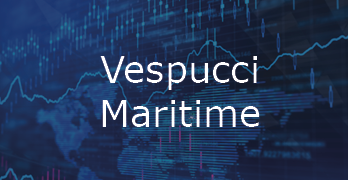FBX Index: No material market change

October 2021 was, to all intents and purposes, a month without major developments. This might seem like an odd statement as the market was highly out of line with the pre-pandemic normality and supply chain disruptions were hitting the headlines of not just the industry press but also the mainstream media.
However, from a data-driven perspective the most apt description of October was that nothing materially changed compared to September. The new data that became available during the months tells the following story, with of course the caveat that data unfortunately tends to lag a bit in terms of timing when they are released:
Global schedule reliability simply remained at a level around 34% in September at the same level as seen in August, and the delays of the late vessels remained around a full week for the third consecutive month.
These delays effectively remove vessel carrying capacity from the market. And for September this meant that 12% of the global fleet was effectively removed – the same as seen in August.
The largest pile-up of vessels waiting in queue is still outside the port complex of Los Angeles/Long Beach. By mid-September the number of waiting vessels reached 70. This declined slightly to the mid-50s in early parts of October only to start escalating again and by end-October the number was getting to 79 vessels waiting in line.
Vessel congestion outside key ports also continued. The largest pile-up of vessels waiting in queue is still outside the port complex of Los Angeles/Long Beach. By mid-September the number of waiting vessels reached 70. This declined slightly to the mid-50s in early parts of October only to start escalating again and by end-October the number was getting to 79 vessels waiting in line.
In terms of freight rates, October did not bring much relief to shippers. The pattern varies slightly across trade lanes, but the overall development is quite well aligned. The FBX rate index shows us the following:
On the Transpacific rate peaked in mid-September and then declined somewhat coming into October. However, this is a typical “glass half-full or half-empty” situation. Rates to the US West Coast decline by some 4,000 USD/FFE which on the surface appears as a major decline. But this still meant a rate of 16,000 USD/FFE by mid-October and by end-October it had climbed back to almost 17,500 USD/FFE. A similar development was seen to the US East Coast where a rate decline of 2,000 USD/FFE only served to reduce the overall level to a still extremely high 20,000 USD/FFE by the end of October.
Basically, all quantifiable market data point in the same direction: The market has neither improved nor worsened in the past month.
On Asia-Europe, rates went from 14,700 USD/FFE to 14,200 USD/FFE whereas rates to the Mediterranean once more reached a new record high by the end of October surpassing the previous peak in mid-September by a hundred USD.
Basically, all quantifiable market data point in the same direction: The market has neither improved nor worsened in the past month.
Looking slightly forward this is concerning. Usually October is a quiet month, mainly impacted by a seasonal lull driven by the Golden Week holiday in China. It appears that all this seasonal impact amounted to was to stall a development that had deteriorated sharply during the peak season. All eyes are now on Chinese New Year 2022, which happens on February 1. Traditionally this would lead to an expectation of strong volume developments throughout January. However, the extreme disruptions in the market combined with the lack of material improvement in October is highly likely to cause many shippers to fast-track their logistics requirements in order to have sufficient buffer in their supply chains. This means we should expect a surge in cargo to begin during November and hence a significant likelihood of worsening problems and increasing rates.
About Lars Jensen, CEO, Vespucci Maritime
Lars is a leading expert and thought leader in analyzing global container shipping markets. Lars has 19 years’ experience hereof the last nine within multiple companies he has founded, with the main focus as CEO of Vespucci Maritime.
Receive monthly container market reports direct to your inbox.